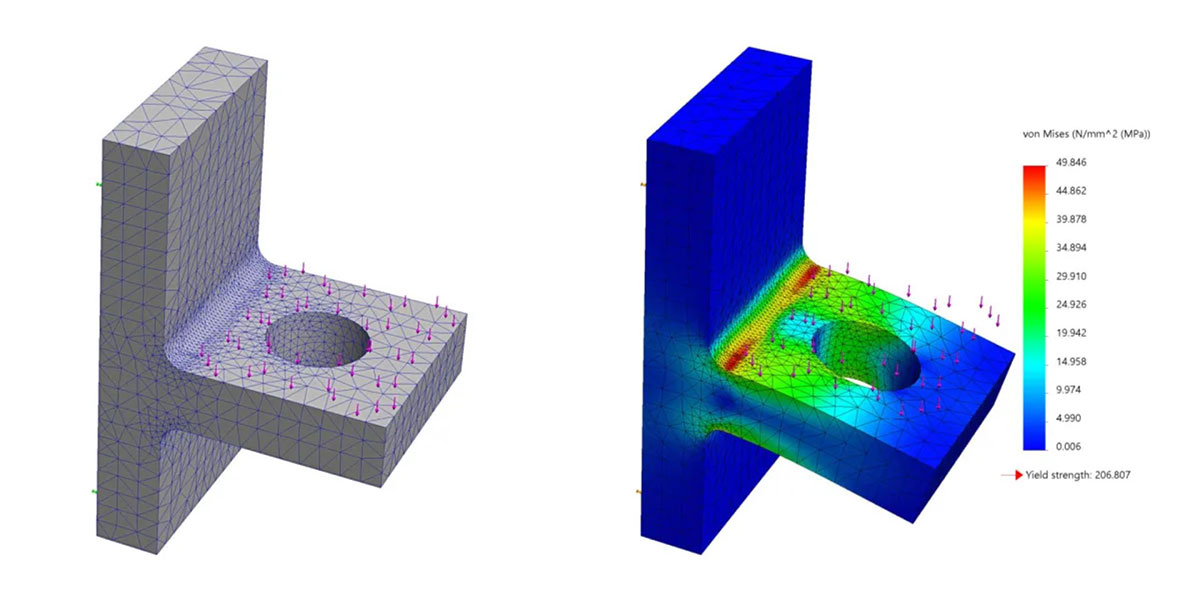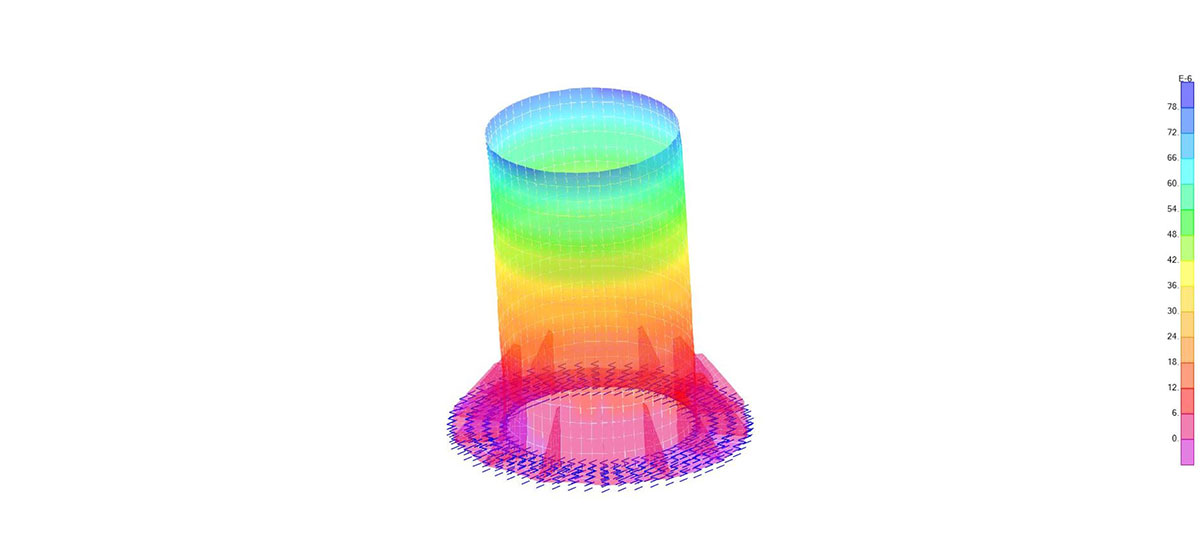Structural analysis is used to determine the forces, stresses and deformations experienced by a structure under different loads and conditions, and thereby ensure the safety and efficiency of buildings, bridges, towers, etc. However, performing these analyses becomes challenging and complex in certain projects, especially when they involve irregularly shaped structures, non-linear materials or cyclic dynamic loads.
To address this complexity, the so-called “finite element method” (FEM), a numerical technique for performing analyses of various physical phenomena, is used. In this method, the structure to be analysed is divided into simple geometrical elements, such as triangles, quadrilaterals or tetrahedrons, to which physical properties are assigned. These elements are then assembled to obtain results for displacements, stresses and strains at the nodes of the structure.

https://greengirt.com/introduction-to-finite-element-analysis/
The application of the FEM method makes it possible to solve global systems of equations and obtain approximate solutions for structures with complex geometries and materials with properties that are difficult to analyse. In addition, FEM offers flexibility, accuracy, efficiency and innovation, being able to process any shape, size and material of a structure, as well as any type and direction of loading.

One of the main advantages of the finite element method is its ability to predict both the local and global behaviour of the structure, including non-linear and dynamic effects. At the same time, it eliminates physical testing, simplifies working assumptions and reduces analysis times and therefore costs.

All in all, thanks to the FEM, it is possible to carry out parametric studies, sensitivity analyses, definition of experiments and, consequently, to optimise the design of new and complex structures.
By Jean Carlos Soto, Senior Structural Engineer in Amusement Logic’s Architecture Dept.






